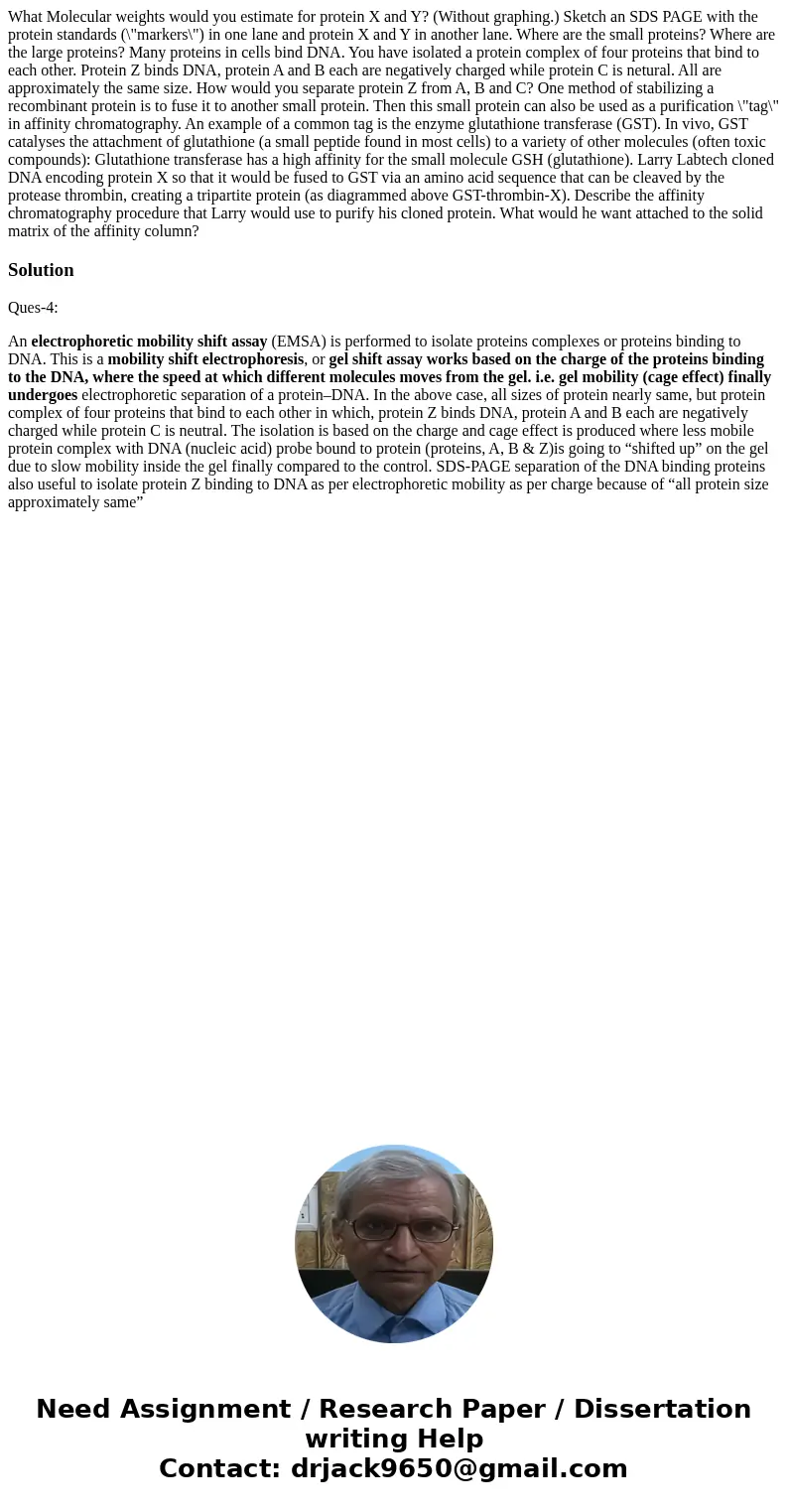What Molecular weights would you estimate for protein X and Y? (Without graphing.) Sketch an SDS PAGE with the protein standards (\"markers\") in one lane and protein X and Y in another lane. Where are the small proteins? Where are the large proteins? Many proteins in cells bind DNA. You have isolated a protein complex of four proteins that bind to each other. Protein Z binds DNA, protein A and B each are negatively charged while protein C is netural. All are approximately the same size. How would you separate protein Z from A, B and C? One method of stabilizing a recombinant protein is to fuse it to another small protein. Then this small protein can also be used as a purification \"tag\" in affinity chromatography. An example of a common tag is the enzyme glutathione transferase (GST). In vivo, GST catalyses the attachment of glutathione (a small peptide found in most cells) to a variety of other molecules (often toxic compounds): Glutathione transferase has a high affinity for the small molecule GSH (glutathione). Larry Labtech cloned DNA encoding protein X so that it would be fused to GST via an amino acid sequence that can be cleaved by the protease thrombin, creating a tripartite protein (as diagrammed above GST-thrombin-X). Describe the affinity chromatography procedure that Larry would use to purify his cloned protein. What would he want attached to the solid matrix of the affinity column?
Ques-4:
An electrophoretic mobility shift assay (EMSA) is performed to isolate proteins complexes or proteins binding to DNA. This is a mobility shift electrophoresis, or gel shift assay works based on the charge of the proteins binding to the DNA, where the speed at which different molecules moves from the gel. i.e. gel mobility (cage effect) finally undergoes electrophoretic separation of a protein–DNA. In the above case, all sizes of protein nearly same, but protein complex of four proteins that bind to each other in which, protein Z binds DNA, protein A and B each are negatively charged while protein C is neutral. The isolation is based on the charge and cage effect is produced where less mobile protein complex with DNA (nucleic acid) probe bound to protein (proteins, A, B & Z)is going to “shifted up” on the gel due to slow mobility inside the gel finally compared to the control. SDS-PAGE separation of the DNA binding proteins also useful to isolate protein Z binding to DNA as per electrophoretic mobility as per charge because of “all protein size approximately same”

 Homework Sourse
Homework Sourse